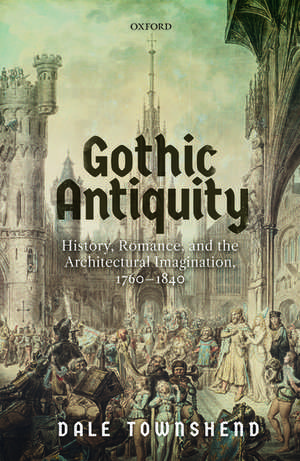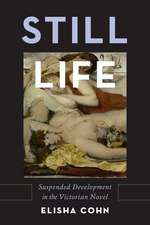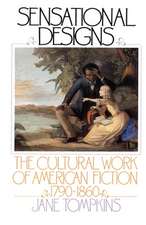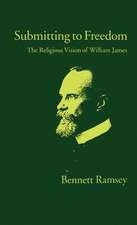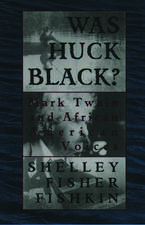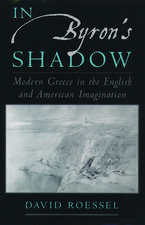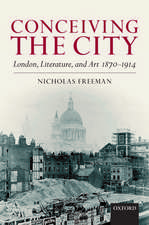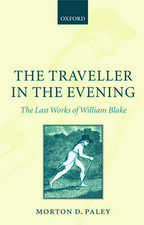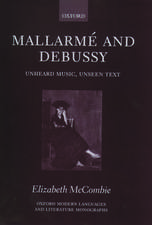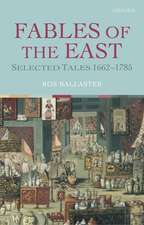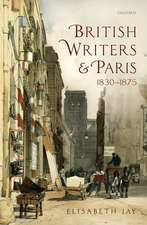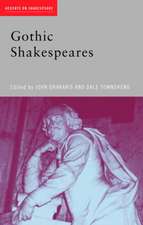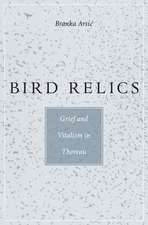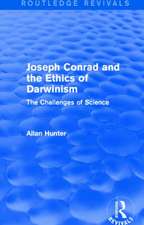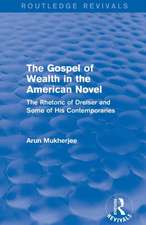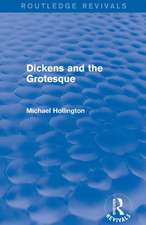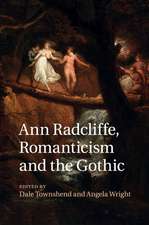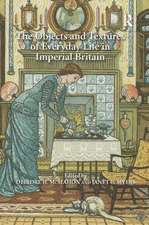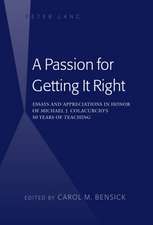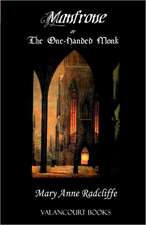Gothic Antiquity: History, Romance, and the Architectural Imagination, 1760-1840
Autor Dale Townshenden Limba Engleză Hardback – 26 sep 2019
Preț: 675.64 lei
Preț vechi: 967.02 lei
-30% Nou
Puncte Express: 1013
Preț estimativ în valută:
129.29€ • 135.32$ • 107.60£
129.29€ • 135.32$ • 107.60£
Carte disponibilă
Livrare economică 26 februarie-04 martie
Preluare comenzi: 021 569.72.76
Specificații
ISBN-13: 9780198845669
ISBN-10: 0198845669
Pagini: 432
Ilustrații: 23 Illustrations
Dimensiuni: 161 x 242 x 28 mm
Greutate: 0.75 kg
Editura: OUP OXFORD
Colecția OUP Oxford
Locul publicării:Oxford, United Kingdom
ISBN-10: 0198845669
Pagini: 432
Ilustrații: 23 Illustrations
Dimensiuni: 161 x 242 x 28 mm
Greutate: 0.75 kg
Editura: OUP OXFORD
Colecția OUP Oxford
Locul publicării:Oxford, United Kingdom
Recenzii
Townshend's book is a comprehensive, thoroughly researched, clearly written, quite convincing, and powerfully argued answer—at last—to the incompleteness and polarization in this array of scholarship... Gothic Antiquity, then, is a masterpiece of its kind: densely packed because of its scholarly rigor but also a pleasure to read because of its lucid style and its well-crafted, logical organization... All future research on and teaching about the Gothic's heyday in England, the rise of Romanticism, and the beginnings of the Victorian era, in writing and architecture, will need to take account of this monumental achievement in aesthetic, literary, and historical scholarship.
Gothic Antiquity is essentially a literary study, but enriched by a clear understanding of the antiquarian engagement with the mediaeval past and its relics, and of the development of philosophical ideas of associationist aesthetics that together underpinned the rediscovery of the Gothic. It provides a detailed and useful summary of a substantial number of Gothic novels, their plots and their authors, and shows how the genre evolved from Walpole to Radcliffe and Charlotte Smith and Sophia Lee, on to 'Monk' Lewis and Maturin and beyond. Above all, it charts a sea-change in popular taste from the Augustan and classical certainties of the early eighteenth century, to an early nineteenth-century world where the head of a landed family might well re-build his seat in a Gothic style to demonstrate his family's antiquity (a successful City merchant might do the same to demonstrate his family's aspirations).
Gothic Antiquity is essentially a literary study, but enriched by a clear understanding of the antiquarian engagement with the mediaeval past and its relics, and of the development of philosophical ideas of associationist aesthetics that together underpinned the rediscovery of the Gothic. It provides a detailed and useful summary of a substantial number of Gothic novels, their plots and their authors, and shows how the genre evolved from Walpole to Radcliffe and Charlotte Smith and Sophia Lee, on to 'Monk' Lewis and Maturin and beyond. Above all, it charts a sea-change in popular taste from the Augustan and classical certainties of the early eighteenth century, to an early nineteenth-century world where the head of a landed family might well re-build his seat in a Gothic style to demonstrate his family's antiquity (a successful City merchant might do the same to demonstrate his family's aspirations).
Notă biografică
Dale Townshend is Professor of Gothic Literature in the Manchester Centre for Gothic Studies, Manchester Metropolitan University. He has published widely on Gothic and Romantic writing of the late eighteenth and early nineteenth centuries, including most recently The Gothic World (with Glennis Byron; Routledge, 2014); Ann Radcliffe, Romanticism and the Gothic (with Angela Wright; Cambridge University Press, 2014); Romantic Gothic: An Edinburgh Companion (with Angela Wright; Edinburgh University Press, 2016); and Writing Britain's Ruins (with Michael Carter and Peter N. Lindfield; British Library, 2017). He was academic advisor on the 'Terror and Wonder: The Gothic Imagination' exhibition at the British Library (2014-2015). Between June 2015 and June 2017, he was the Principal Investigator on an AHRC Leadership Fellowship entitled Writing Britain's Ruins, 1700-1850: The Architectural Imagination, and in 2016, held a Fellowship at the Lewis Walpole Library, Yale University.
